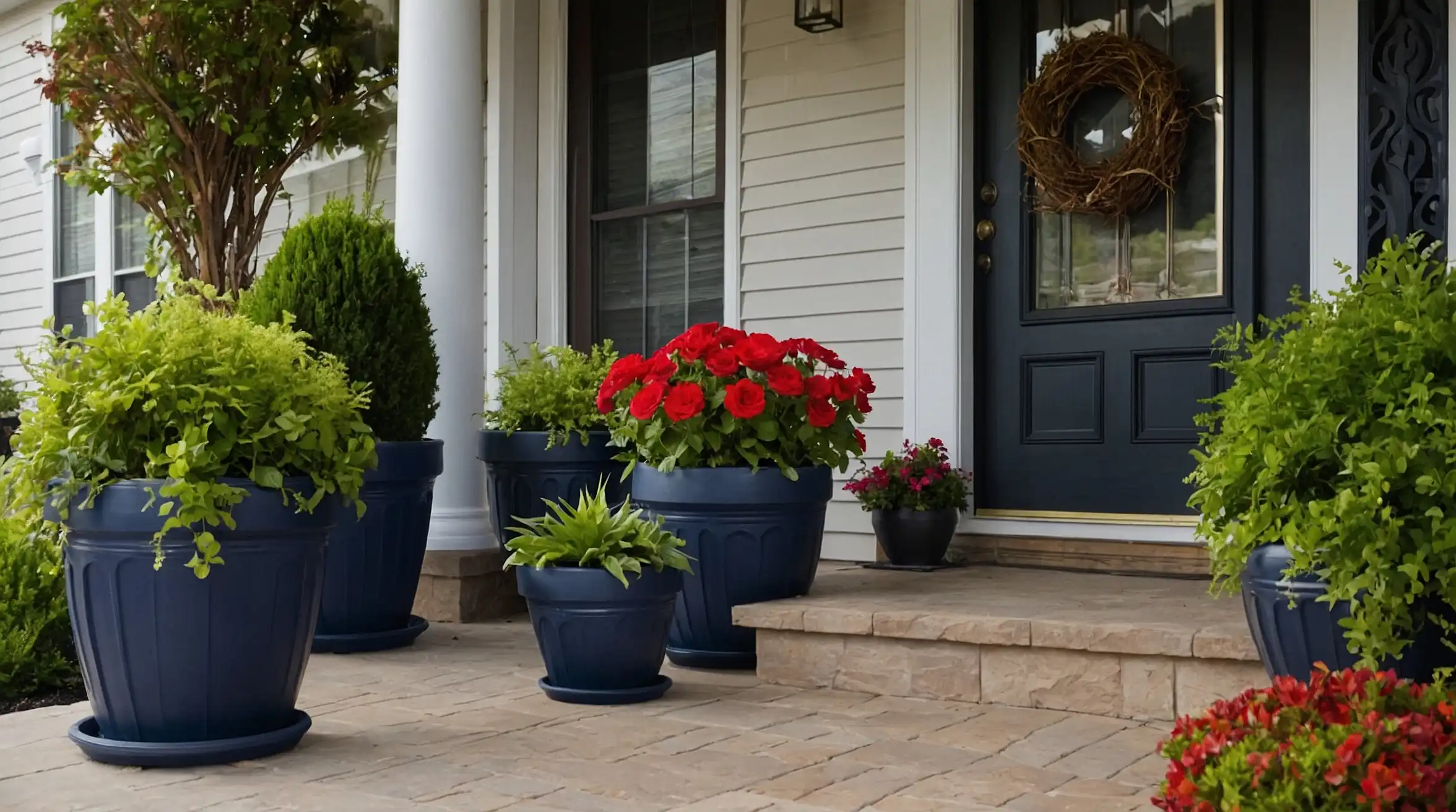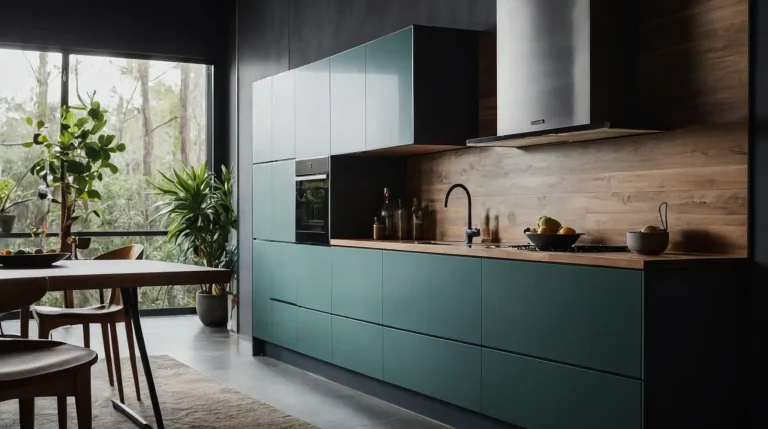17 Best Front Porch Flower Pots Ideas
You can transform your front porch into a welcoming oasis with strategic flower pot arrangements that boost curb appeal instantly.
The right containers and plants create lasting first impressions.
Your front entrance deserves beautiful, thoughtful design that reflects your personal style.
Whether you prefer classic elegance or modern simplicity, there’s a perfect approach.
These 17 ideas will inspire you to create stunning front porch displays that neighbors will admire and guests will remember.
1: Create Symmetrical Matching Planters
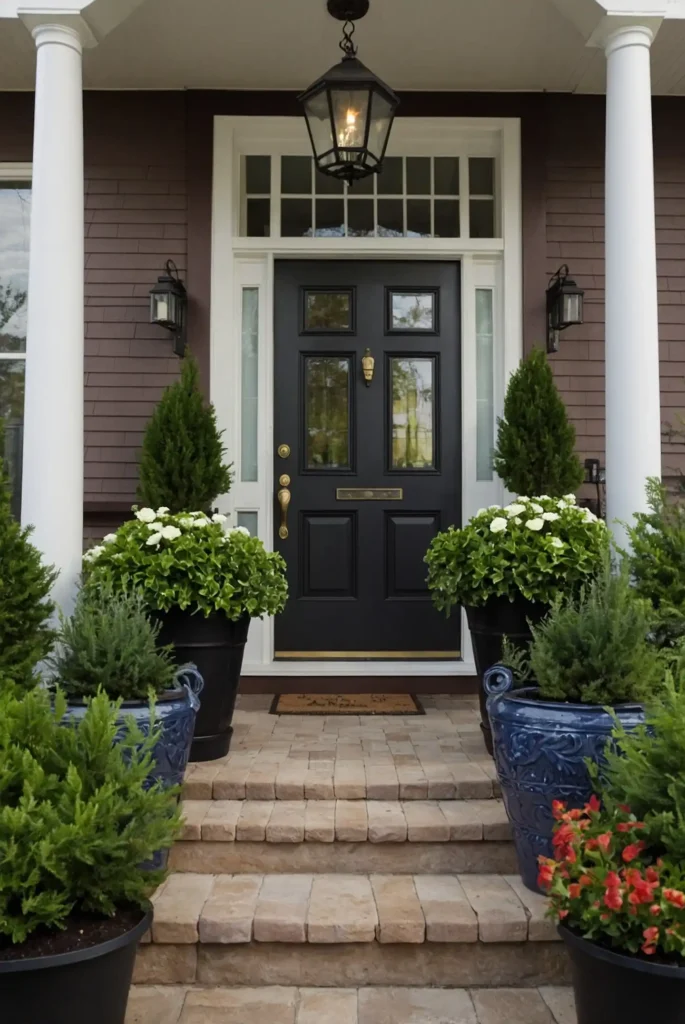
You’ll achieve timeless elegance by placing identical large planters on either side of your front door.
This classic approach creates balance and sophistication that works with any architectural style.
Choose substantial containers that match your home’s scale.
Oversized urns or rectangular planters provide the visual weight needed for impressive curb appeal.
Fill with matching plants for cohesive design.
Seasonal flowers, evergreen shrubs, or structured topiaries work beautifully for this formal arrangement style.
2: Design Tiered Cascading Arrangements
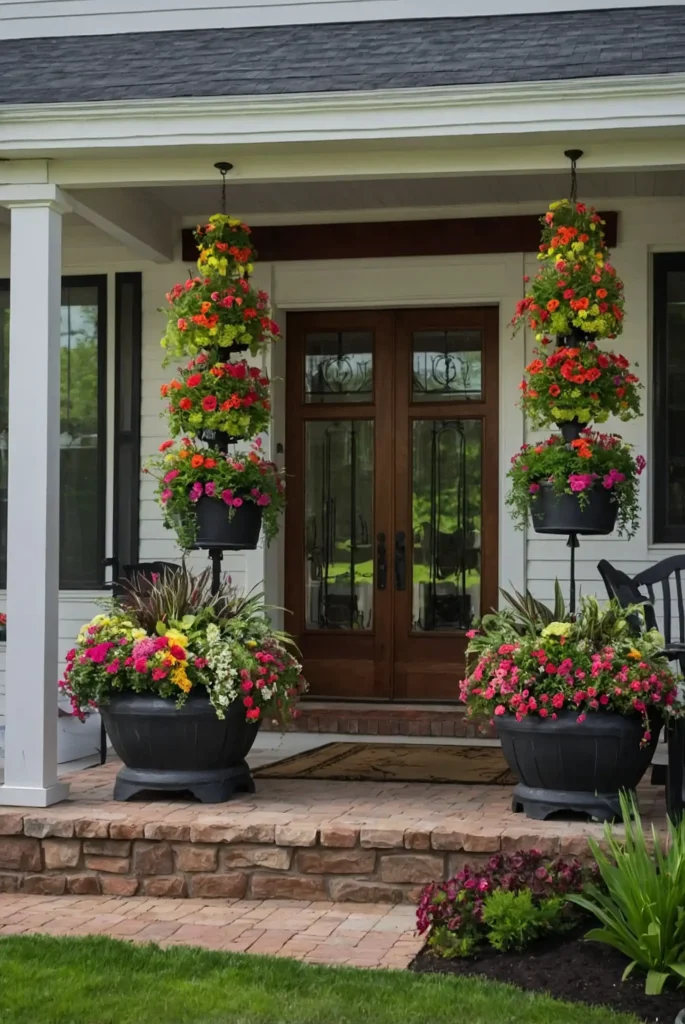
You can add vertical interest by grouping planters of different heights to create cascading displays.
This layered approach maximizes visual impact while using minimal floor space.
Start with the tallest planter in back and graduate down to shorter containers.
This creates depth and allows each plant to receive adequate light.
Mix trailing and upright plants for dynamic flow. Petunias, ivy, and spillers combined with upright flowers create beautiful cascading effects.
3: Embrace Seasonal Color Themes

You’ll keep your entrance fresh year-round by switching flower colors to match each season’s palette.
This approach ensures your porch always feels current and intentional.
Spring brings pastels and bright yellows.
Summer allows for vibrant reds, oranges, and purples that can withstand heat and sunshine.
Fall calls for deep oranges, burgundy, and golden yellows.
Winter arrangements focus on evergreens with red berries or white flowers for contrast.
4: Mix Different Container Heights

You can create visual rhythm by combining tall, medium, and short planters in grouped arrangements.
This varied approach adds complexity and prevents monotonous linear displays.
Use odd numbers for the most pleasing arrangements. Groups of three or five containers create natural focal points that draw the eye.
Vary not just height but also width and texture.
Round, square, and rectangular planters combined create interesting geometric relationships throughout your display.
5: Install Window Box Style Planters
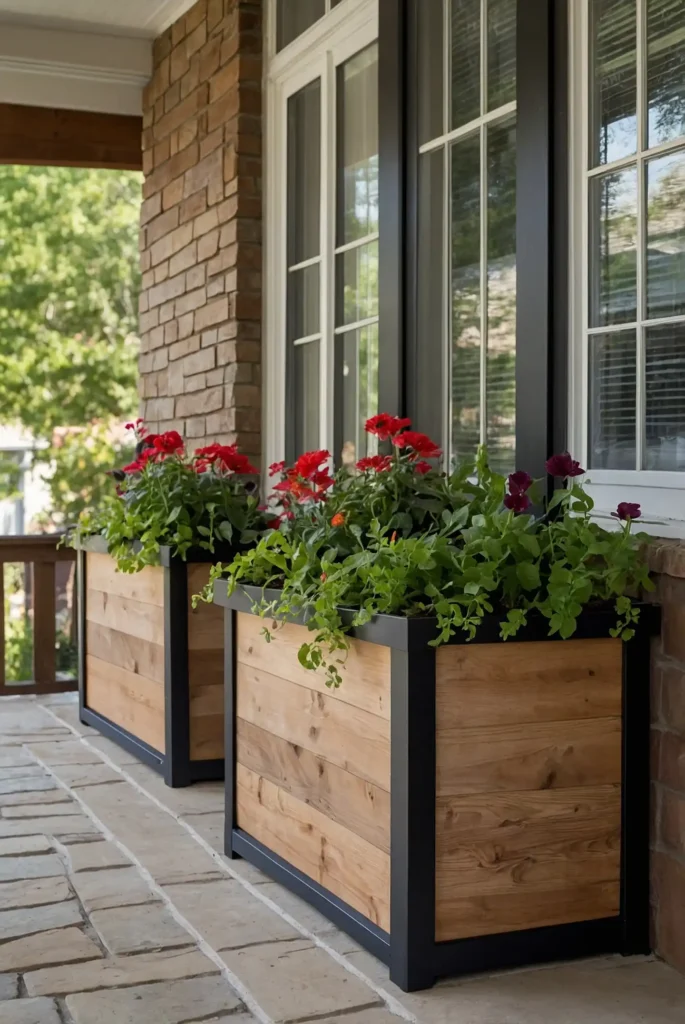
You’ll maximize limited porch space by mounting long, narrow planters along railings or under windows.
These linear containers provide extensive planting area without taking floor space.
Choose planters that complement your home’s trim and architectural details.
Coordinate colors and materials for cohesive design that enhances rather than competes.
Fill with trailing plants that spill over edges beautifully.
Nasturtiums, sweet potato vine, and bacopa create lush, overflowing displays perfect for this format.
6: Combine Hanging Baskets with Floor Pots
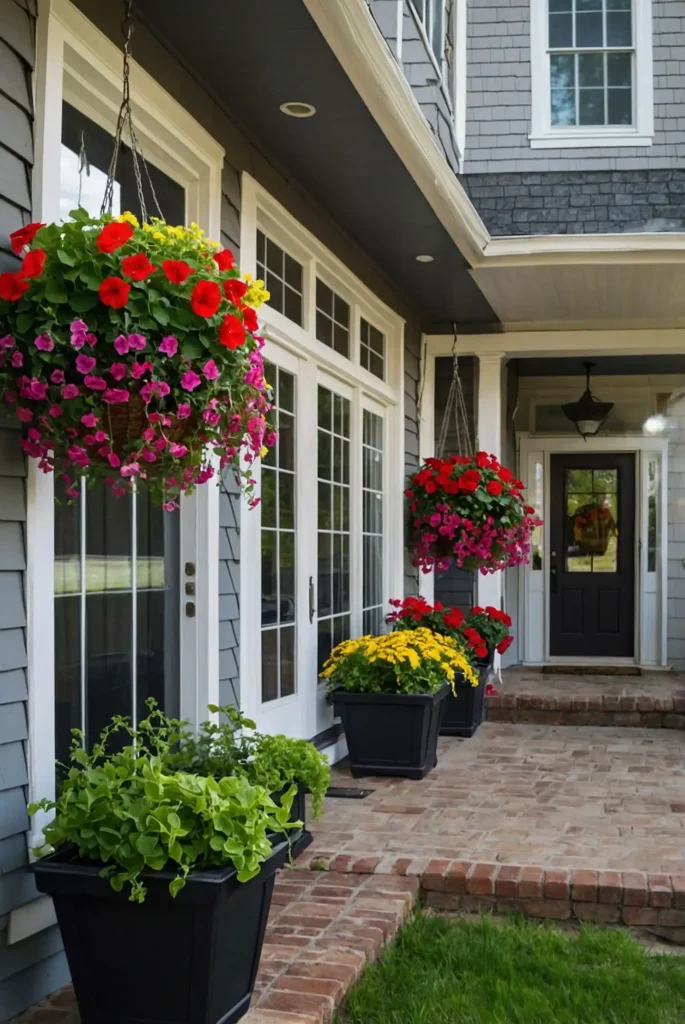
You can add dimension by mixing hanging planters with traditional floor containers.
This approach utilizes vertical space while creating layers of visual interest.
Hang baskets at varying heights for dynamic appeal.
Different levels prevent competition while allowing each arrangement to shine individually.
Choose complementary but not identical plants for each level.
This coordination creates flow while preventing the display from appearing too repetitious or predictable.
7: Choose Large Statement Urns

You’ll make dramatic impact with oversized decorative urns that serve as sculptural focal points.
These substantial containers work especially well for traditional and formal home styles.
Select urns proportionate to your porch and door size.
The containers should feel substantial without overwhelming the architectural features of your entrance.
Plant with bold, architectural specimens like ornamental grasses or large hostas.
These plants complement the urn’s dramatic scale while providing appropriate visual weight.
8: Build Rustic Wooden Planters

You can achieve farmhouse charm with weathered wood containers that add natural texture to your porch design.
These rustic elements soften hard architectural lines beautifully.
Use cedar or treated lumber for weather resistance.
Natural wood weathers gracefully while providing excellent drainage and insulation for plant roots.
Fill with cottage garden flowers like zinnias, marigolds, and sunflowers.
These informal blooms complement the casual, welcoming feel of wooden containers perfectly.
9: Select Modern Geometric Containers
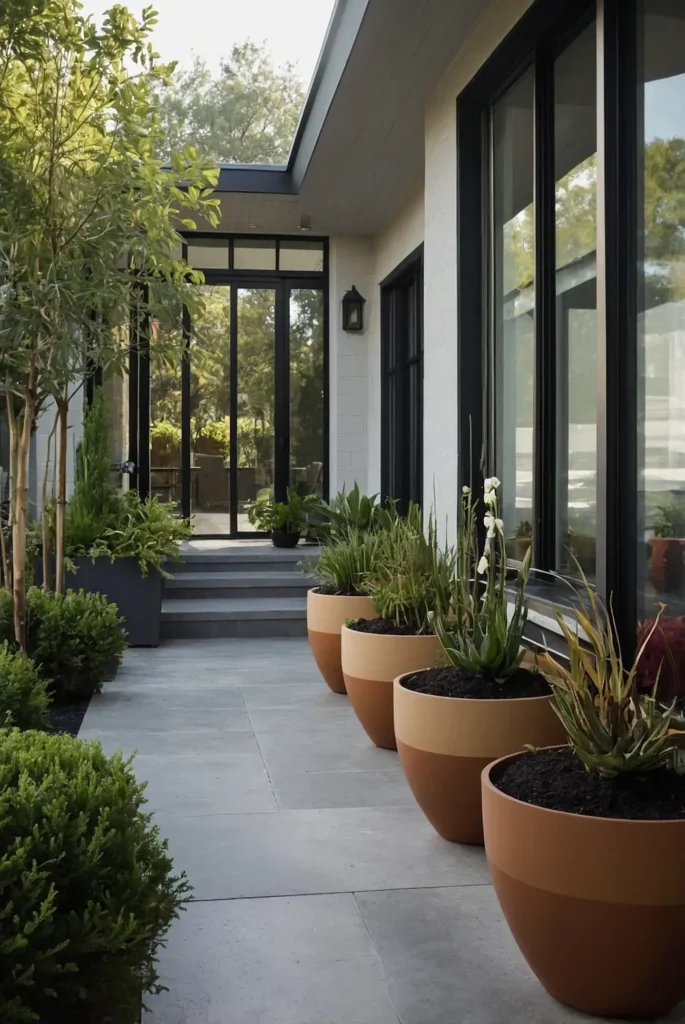
You’ll complement contemporary architecture with sleek, angular planters in neutral colors.
These clean-lined containers enhance modern home styles without competing for attention.
Choose materials like fiberglass, concrete, or powder-coated metal.
These contemporary materials withstand weather while maintaining crisp, architectural appearances.
Plant with structured specimens like ornamental grasses or succulents.
These plants echo the container’s geometric qualities while providing interesting textural contrast.
10: Repurpose Vintage Containers

You can add character by using antique washtubs, milk cans, or other vintage vessels as unique planters.
These repurposed containers tell stories while providing functional beauty.
Ensure proper drainage by drilling holes if necessary.
Most vintage containers weren’t designed for planting, so modifications become essential for plant health.
Choose plants that complement the container’s era and style.
Heirloom varieties and cottage garden flowers work beautifully with vintage vessels.
11: Create Dedicated Herb Gardens
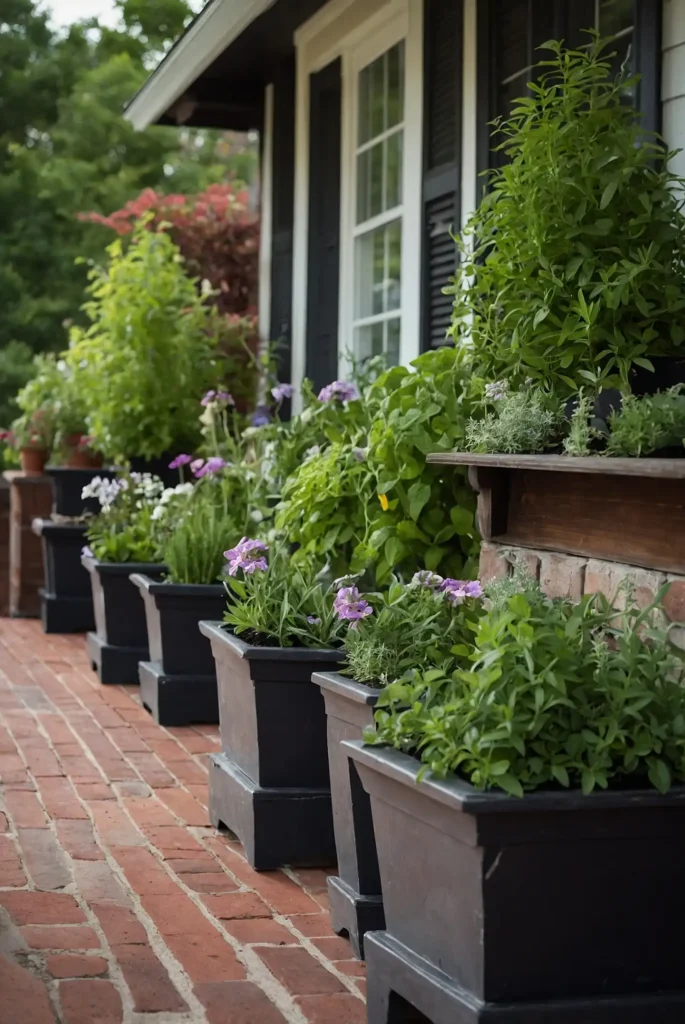
You’ll combine beauty with functionality by planting culinary herbs in attractive containers near your front door.
This approach provides convenient access while creating fragrant welcomes.
Group herbs by water and sun requirements for easier maintenance.
Mediterranean herbs like rosemary and thyme prefer drier conditions than basil and parsley.
Choose attractive, food-safe containers that complement your home’s style.
Galvanized tubs, ceramic pots, or wooden boxes work well for edible gardens.
12: Design Succulent Arrangements
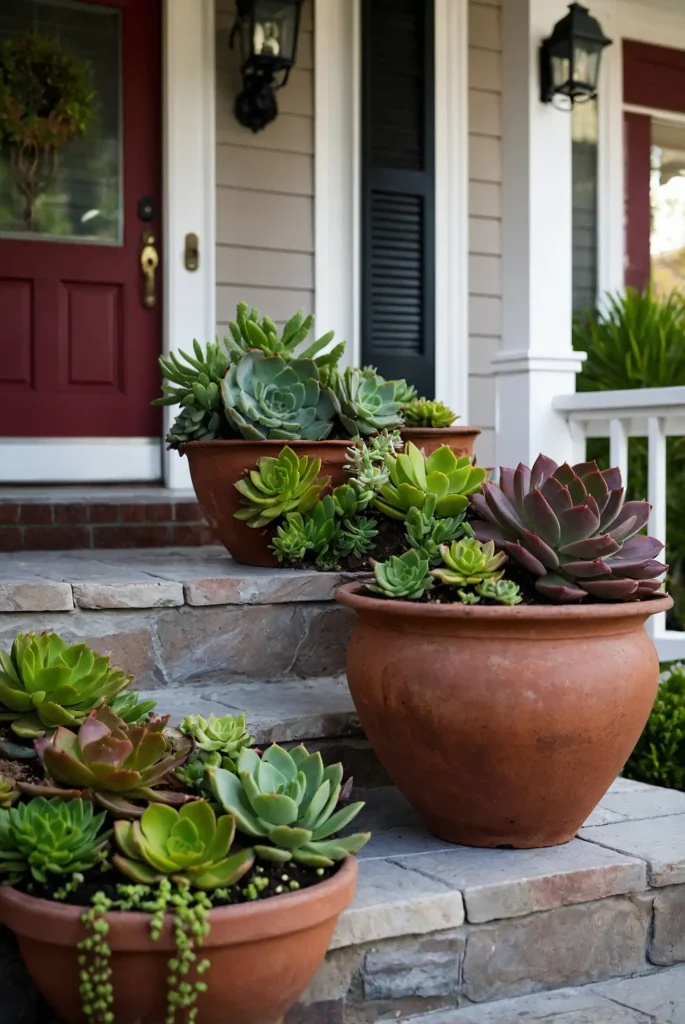
You can achieve low-maintenance beauty with drought-tolerant succulent gardens in decorative containers.
These water-wise plants provide year-round interest with minimal care requirements.
Select containers with excellent drainage to prevent root rot.
Succulents prefer dry conditions and can quickly decline in waterlogged soil.
Mix different textures, colors, and growth habits for visual interest.
Combine upright varieties with trailing species for balanced, dynamic arrangements.
13: Plan Monochromatic Color Schemes

You’ll create sophisticated displays by using different shades of the same color family throughout your arrangements.
This approach provides unity while allowing for subtle variation and depth.
Choose a color that complements your home’s exterior palette. This coordination creates intentional design that enhances your property’s overall aesthetic appeal.
Vary flower sizes and textures within your chosen color range.
Different bloom shapes and foliage types prevent monochromatic schemes from appearing flat or boring.
14: Display Tropical Plant Collections
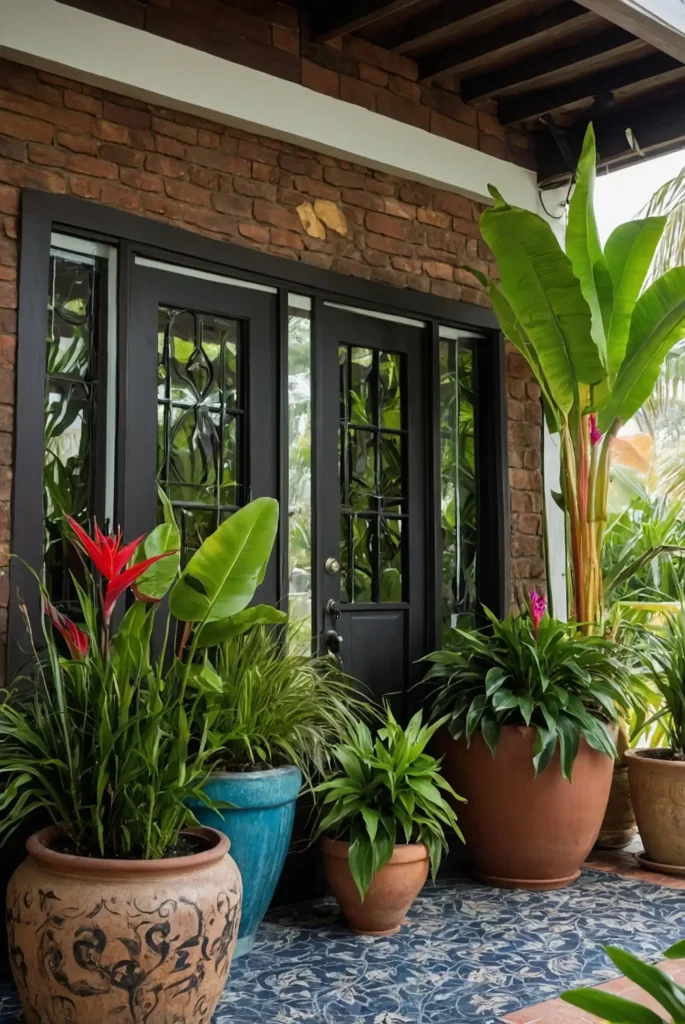
You can bring vacation vibes home with lush tropical plants in decorative containers.
These exotic specimens create resort-like atmospheres that transport viewers to faraway destinations.
Choose plants appropriate for your climate zone year-round.
Many tropicals work as seasonal displays in cooler climates or can move indoors during winter.
Use large containers to accommodate growth and root systems.
Tropical plants often grow quickly and appreciate generous root space for optimal development.
15: Arrange Cottage Garden Mixed Plantings
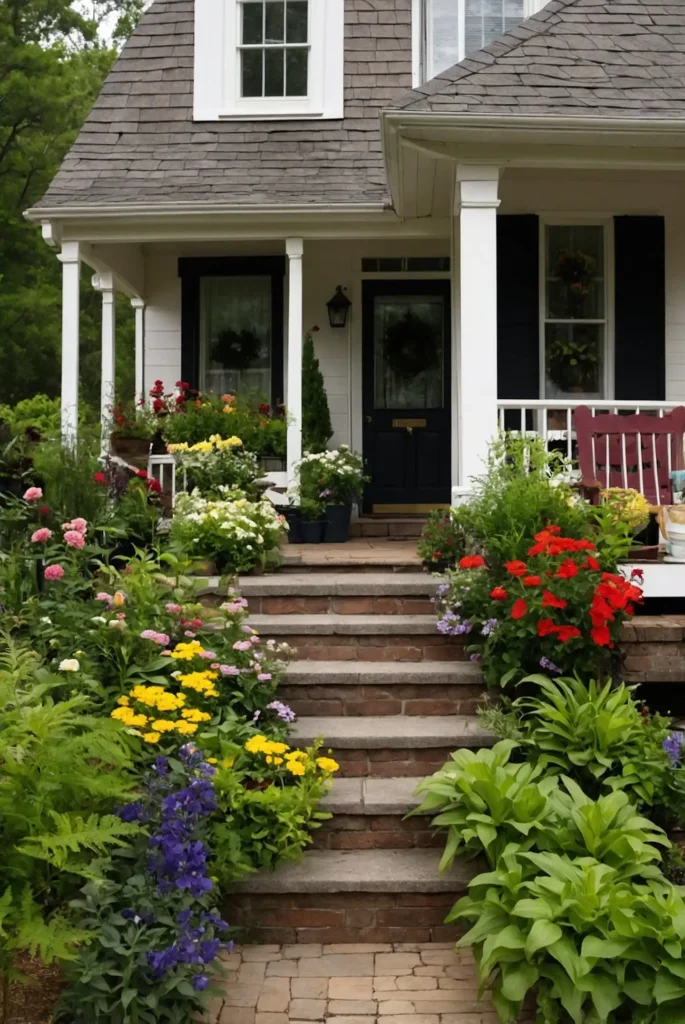
You’ll achieve romantic, informal beauty by combining multiple flower varieties in generous containers.
This abundant approach creates the charming overflow associated with English cottage gardens.
Mix annuals and perennials for extended blooming periods.
This combination provides immediate color while establishing long-term garden structure for future seasons.
Include plants with different bloom times for continuous color.
Succession planting ensures something always looks fresh and appealing throughout the growing season.
16: Pair Plants with Architectural Features
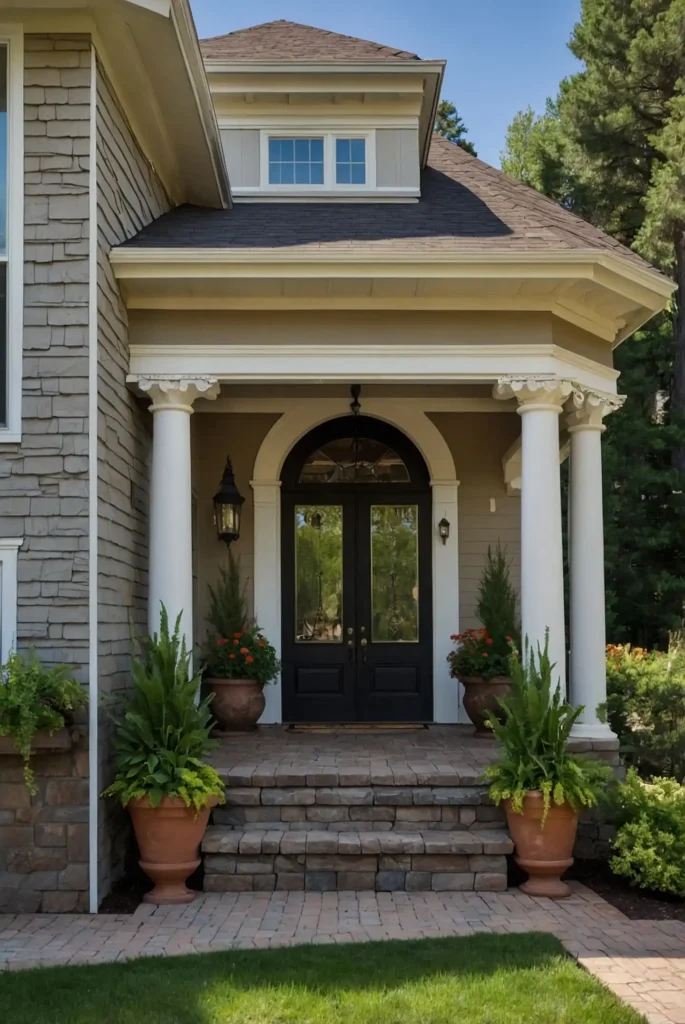
You can enhance your home’s architectural details by choosing plants that complement structural elements.
This thoughtful approach creates harmony between natural and built environments.
Echo your home’s lines and proportions in plant selections.
Formal architecture pairs with structured plants, while casual styles work with relaxed, flowing specimens.
Consider your home’s materials and colors when selecting containers.
Coordination between planters and architectural elements creates sophisticated, intentional design schemes.
17: Maintain Year-Round Evergreen Displays
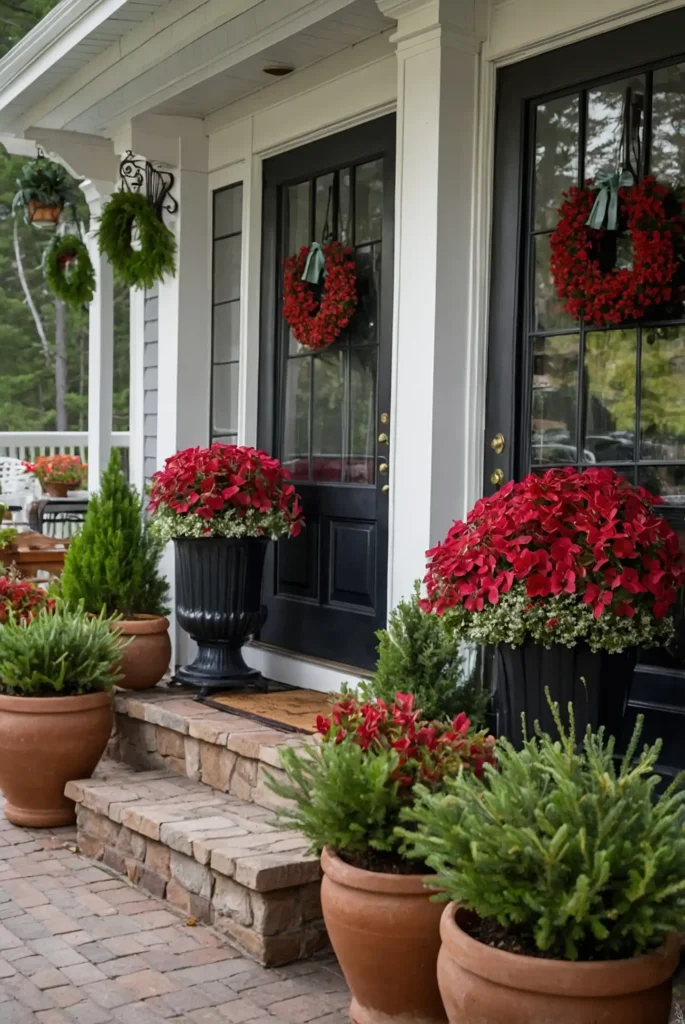
You’ll ensure constant curb appeal with evergreen arrangements that look attractive through all seasons.
These reliable plantings provide structure and color even during dormant winter months.
Choose evergreens appropriate for container culture in your climate.
Not all evergreen species adapt well to the temperature fluctuations containers experience.
Add seasonal accents like colorful berries or decorative elements.
These small additions refresh evergreen displays while maintaining the reliable green foundation.
Conclusion
Your front porch flower pots become welcoming focal points that reflect your style while enhancing your home’s curb appeal year-round.

